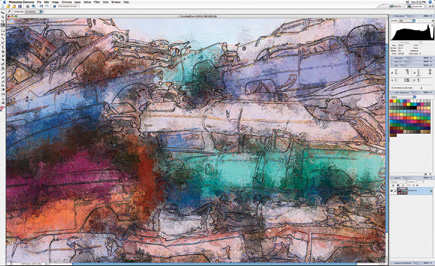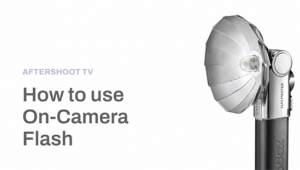Apple’s Cinema Displays; Three LCD Sizes Designed For Professional Visual Creation Page 2
With LCD displays connected with a DVI interface, optimum display image quality is achieved at the display's native resolution. For most users with only CRT experience, this is usually a higher resolution than they are used to, particularly with larger LCDs like the 30" Cinema Display. This has both advantages and disadvantages.
If a photo is zoomed in at 100 percent of file resolution, more of the image is displayed on screen, making many tasks easier. However, the fixed font and dialog box size of applications like Photoshop can make the text appear rather small. This can make values hard to read and sliders more difficult to adjust. But with the Cinema Display's wide HD format any disadvantage is offset by having more room free at the sides of the screen, where tools can be viewed without encroaching on the displayed image.
 |
|
|
Evaluation And Recommendation
The build quality and the finish of the Apple Cinema Displays is about the best
I have seen. And the image quality is very competitive and particularly well
suited to photographic image editing and processing. The Apple Cinema Displays
are definitely the easiest to set up and profile for critically precise photo
adjustment and effective print matching. And having both FireWire and USB 2.0
ports for connection is a convenient advantage. On the other hand, the display's
height cannot be adjusted on its base, nor like some top-of-the-line models,
there is no provision or support for screen rotation to use the display in portrait
mode.
Overall, for the price, the Cinema Displays are an ideal value for photographers
doing digital darkroom work. They are probably used by more creative professionals
than any other LCD display today. And because they can be used with PCs as well,
there is no reason not to join this crowd even if you don't belong to
the Apple Mac club.
Technical Specifications
Resolutions: 20"--1680x1050 pixels (optimum resolution),
1280x800 pixels, 1024x640 pixels; 23"--1920x1200 pixels (optimum
resolution), 1280x800 pixels, 1024x640 pixels; 30"--2560x1600 pixels
(optimum resolution), 2048x1280 pixels, 1920x1200 pixels, 1280x800 pixels, 1024x640
pixels
Display Colors (Maximum): 16.7 million
Viewing Angle (Typical): 170Þ horizontal; 170Þ
vertical
Brightness (Typical): 20"--250 cd/m2, 23"--270
cd/m2, 30"--270 cd/m2
Contrast Ratio (Typical): 400:1
Ports: Two-port, self-powered USB 2.0 hub, two FireWire 400
ports, Kensington security port
Size And Weight: 20"--16.1x18.5x6.8" (41x47.1x17.4cm),
14.5 lbs (6.6 kg); 23"--17.7x21.1x7.3" (45x53.6x18.7cm), 15.5
lbs (7.03 kg); 30"--21.3x27.2x8.46" (54.3x68.8x21.5cm), 27.5
lbs (12.5 kg)
For a full list of specifications, visit www.apple.com.
You may also contact Apple Computer, Inc. at 1 Infinite Loop, Cupertino, CA
95014; (408) 996-1010.
- Log in or register to post comments

































